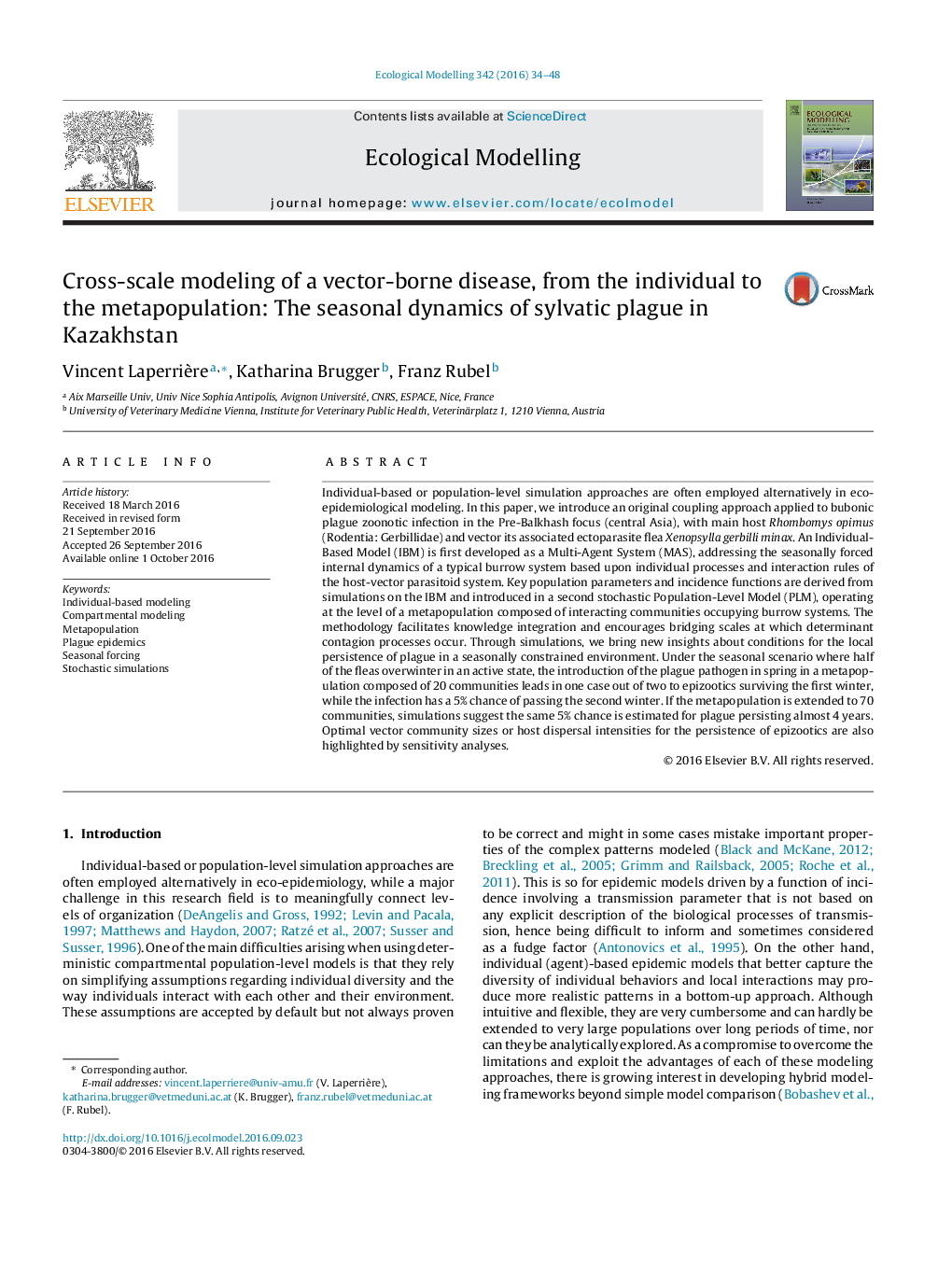| کد مقاله | کد نشریه | سال انتشار | مقاله انگلیسی | نسخه تمام متن |
|---|---|---|---|---|
| 4375492 | 1617405 | 2016 | 15 صفحه PDF | دانلود رایگان |
• We connect an Individual-Based Model and a stochastic Population-Level Model to simulate plague seasonal dynamics in Kazakhstan.
• The PLM incorporates the metapopulation structure of hosts and vectors.
• Key parameters of the PLM such as the transmission coefficients are derived from simulations of the IBM.
• Simulations reveal new insights about conditions for plague infection persistence for several years in closed and structured populations.
• The modeling framework is used for sensitivity analysis and scenario testing.
Individual-based or population-level simulation approaches are often employed alternatively in eco-epidemiological modeling. In this paper, we introduce an original coupling approach applied to bubonic plague zoonotic infection in the Pre-Balkhash focus (central Asia), with main host Rhombomys opimus (Rodentia: Gerbillidae) and vector its associated ectoparasite flea Xenopsylla gerbilli minax. An Individual-Based Model (IBM) is first developed as a Multi-Agent System (MAS), addressing the seasonally forced internal dynamics of a typical burrow system based upon individual processes and interaction rules of the host-vector parasitoid system. Key population parameters and incidence functions are derived from simulations on the IBM and introduced in a second stochastic Population-Level Model (PLM), operating at the level of a metapopulation composed of interacting communities occupying burrow systems. The methodology facilitates knowledge integration and encourages bridging scales at which determinant contagion processes occur. Through simulations, we bring new insights about conditions for the local persistence of plague in a seasonally constrained environment. Under the seasonal scenario where half of the fleas overwinter in an active state, the introduction of the plague pathogen in spring in a metapopulation composed of 20 communities leads in one case out of two to epizootics surviving the first winter, while the infection has a 5% chance of passing the second winter. If the metapopulation is extended to 70 communities, simulations suggest the same 5% chance is estimated for plague persisting almost 4 years. Optimal vector community sizes or host dispersal intensities for the persistence of epizootics are also highlighted by sensitivity analyses.
Figure optionsDownload as PowerPoint slide
Journal: Ecological Modelling - Volume 342, 24 December 2016, Pages 34–48
